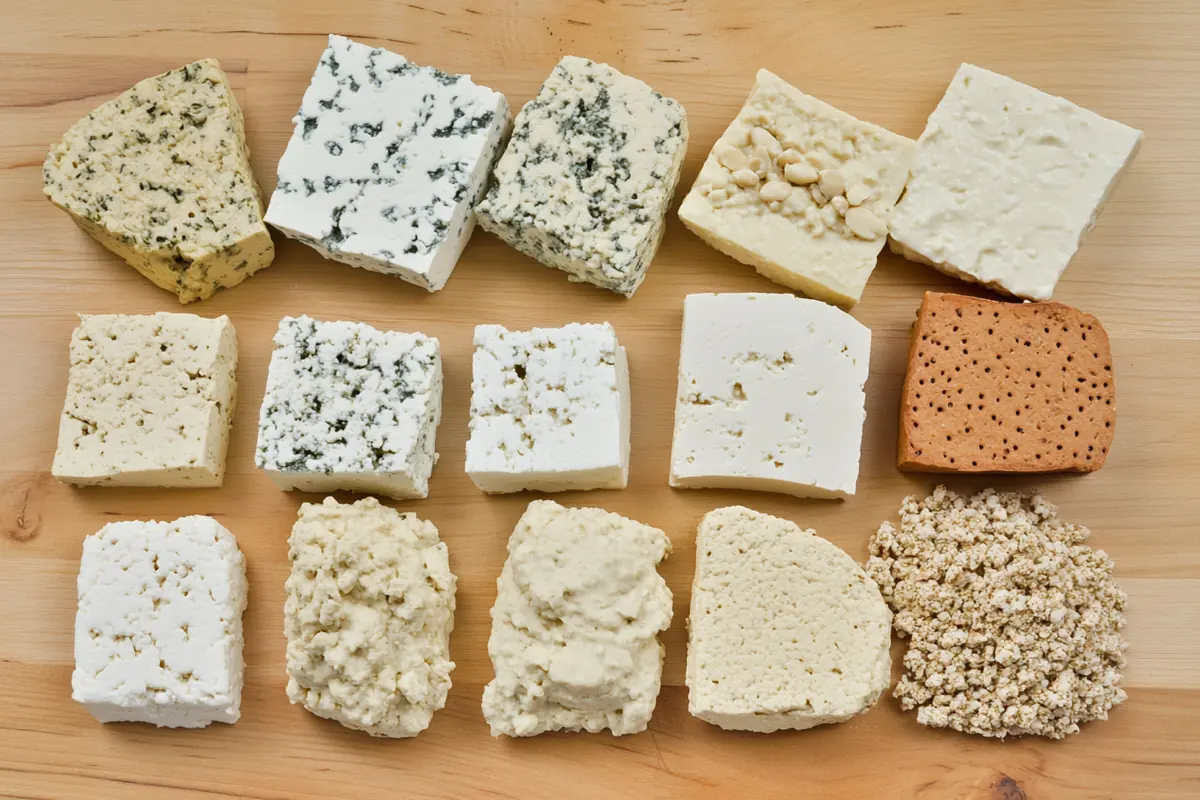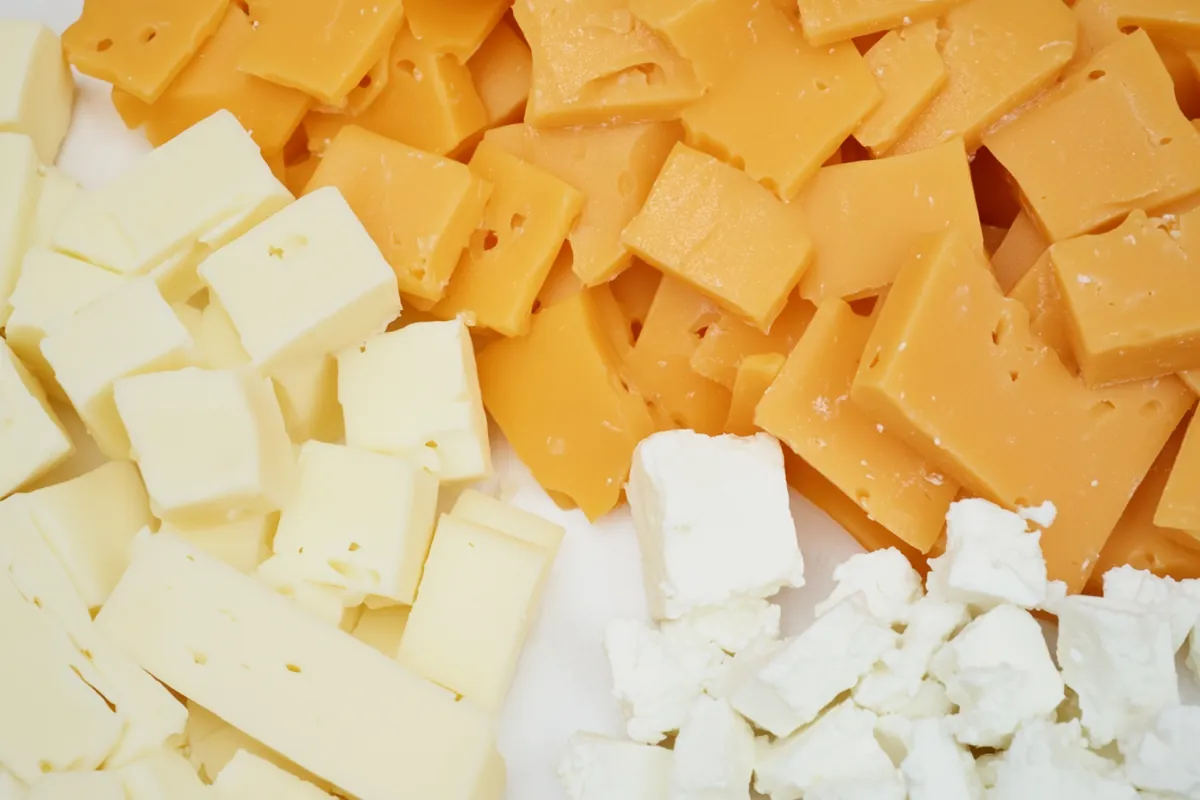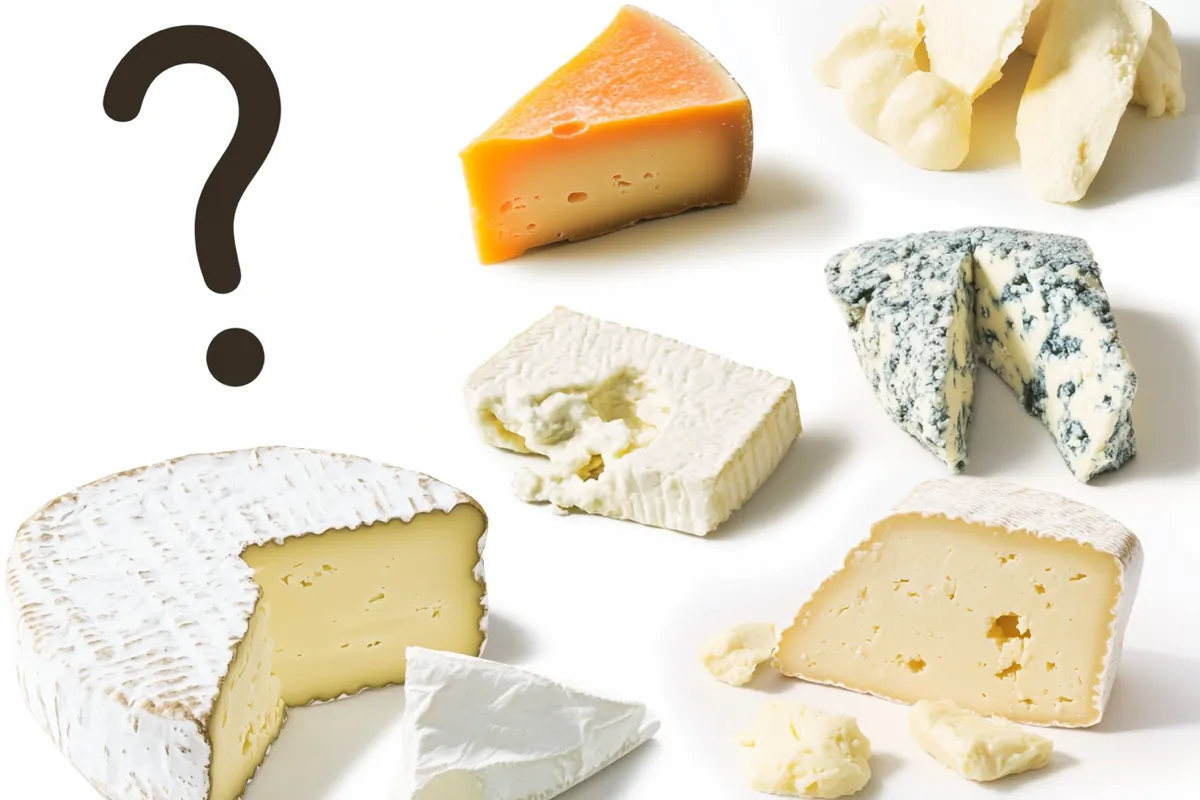Feta cheese is a beloved ingredient in many dishes. However, there are times when you might need a substitute for feta cheese. Whether you have dietary restrictions, are looking for vegan options, or simply want to try something different, this guide covers everything you need to know about alternatives to feta cheese.
Table of Contents
Understanding Feta Cheese
Feta cheese is a brined curd cheese that originated in Greece. Its crumbly texture and tangy flavor make it a versatile ingredient in salads, pastries, and many Mediterranean dishes. Understanding what feta cheese is can help you find the right substitute that maintains the essence of your recipe.
What is Feta Cheese?
Feta cheese is traditionally made from sheep’s milk, although cow’s milk is also used. It has a unique crumbly texture and a salty, tangy flavor. Feta is often used in Greek salads, spanakopita, and as a topping for various dishes. Its distinct taste is due to the aging process and the brine in which it is stored.
Flavor Profile of Feta Cheese
The flavor of feta cheese is often described as salty, tangy, and slightly creamy. It can vary depending on the milk used and the aging process. This unique flavor profile makes it a favorite in many recipes. However, if you’re unable to use feta cheese, understanding its flavor can guide you in selecting an appropriate substitute.
Nutritional Value of Feta Cheese
Feta cheese is relatively low in calories compared to many other cheeses. It provides protein, calcium, and several vitamins. A typical serving contains about 75 calories, 4 grams of protein, and 6 grams of fat. This nutritional profile makes it a popular choice for those looking to add flavor without too many calories.
Why Substitute Feta Cheese?
There are various reasons why someone might need a substitute for feta cheese. Understanding these reasons can help you make the right choice for your dishes.
Dietary Restrictions and Preferences
Many individuals have dietary restrictions that prevent them from consuming feta cheese. This includes lactose intolerance, dairy allergies, or a preference for vegan diets. For these individuals, finding a suitable substitute is essential for enjoying their favorite dishes without compromising their health.
Availability and Cost
Feta cheese may not always be readily available in your local grocery store. Additionally, it can be more expensive than other cheese options. This can lead you to seek alternatives that are easier to find or more budget-friendly.
Flavor and Texture Adaptations
Sometimes, you might want to experiment with different flavors and textures in your meals. Substituting feta cheese with other options allows you to play with your recipes, giving them a new twist while still maintaining a delicious taste.
Part 2 will explore specific substitutes for feta cheese, including non-dairy and vegan options, and will answer whether mozzarella can serve as a suitable alternative. Stay tuned to discover the best choices for your culinary needs!

Non-Dairy Substitute for Feta Cheese
Finding a suitable non-dairy substitute for feta cheese can open up new culinary possibilities, particularly for those following a vegan or dairy-free lifestyle. These alternatives not only mimic the texture of feta but can also provide a similar flavor experience.
Popular Non-Dairy Options
Several non-dairy alternatives effectively replace feta cheese in various dishes. Here are the most popular choices:
- Tofu: Firm tofu can be crumbled to mimic feta’s texture. Marinating it in lemon juice, vinegar, or nutritional yeast can enhance its flavor, making it a great substitute for salads and pasta dishes.
- Almond Cheese: Made from ground almonds, this cheese can be quite creamy and has a mild flavor. Its crumbly texture makes it a good fit for salads, similar to feta.
- Cashew Cheese: This cheese is made from soaked cashews blended with nutritional yeast and spices. It has a rich, creamy texture and can be flavored to replicate feta cheese’s tanginess.
- Soy Cheese: Specifically designed for vegans, soy cheese can imitate feta’s taste and texture. Look for varieties that are specifically labeled as feta-style.
These options can be used in many recipes, including salads, wraps, and savory pastries.
How to Use Non-Dairy Substitutes
When using a non-dairy substitute for feta cheese, there are a few tips to ensure the best flavor and texture:
- Enhance the Flavor: Most non-dairy cheeses are milder than feta. To get a closer match, consider seasoning them with lemon juice, garlic powder, or herbs like oregano and basil.
- Texture Matters: Crumbling the cheese or cutting it into small pieces can help mimic the texture of feta. This is especially true for tofu and nut-based cheeses.
- Cooking Considerations: If you’re baking or cooking with these substitutes, keep in mind that non-dairy cheeses may melt differently than feta. It’s best to experiment with cooking times and temperatures.
Vegan Substitute for Feta Cheese
If you are looking for a vegan substitute for feta cheese, you can find many delicious alternatives that cater to plant-based diets. These substitutes can provide a similar taste and texture, ensuring that your vegan dishes remain flavorful.
Best Vegan Alternatives to Feta
Here are some top vegan alternatives to feta cheese:
- Vegan Feta Cheese: Some brands offer pre-made vegan feta cheese made from a blend of nuts, soy, and seasonings. These products are designed to imitate the flavor and texture of traditional feta.
- Chickpea Salad: For a unique twist, mix mashed chickpeas with lemon juice, nutritional yeast, and spices. This creates a flavorful and creamy topping that can serve as a feta substitute.
- Coconut Yogurt: Non-dairy yogurt can also work in certain recipes. While it may not have the same texture, it can add a creamy element to salads or wraps.
Recipes Using Vegan Feta Alternatives
Here are a few ideas for incorporating vegan feta substitutes into your meals:
- Vegan Greek Salad: Combine cucumbers, tomatoes, olives, and red onions with crumbled vegan feta for a refreshing dish.
- Stuffed Peppers: Use crumbled tofu or chickpea salad mixed with spices as a filling for bell peppers. Bake until tender for a satisfying meal.
- Pasta Dishes: Toss cooked pasta with sun-dried tomatoes, spinach, and your favorite vegan feta substitute for a quick and tasty dinner.
Can You Substitute Mozzarella for Feta Cheese?
Many people wonder, can you substitute mozzarella for feta cheese? While mozzarella and feta are both popular cheeses, they have different flavors and textures. Understanding these differences can help you decide when to make this substitution.
Comparing Mozzarella and Feta
Mozzarella is a soft cheese known for its mild flavor and stretchy texture. In contrast, feta is crumbly and tangy. Here’s how they stack up:
- Texture: Mozzarella is soft and gooey, while feta is crumbly and firm. This difference can affect the overall texture of your dish.
- Flavor: Mozzarella has a milder taste, while feta is salty and tangy. While mozzarella can work

Can I Use Cheddar Instead of Feta?
When considering a substitute for feta cheese, many people ask, can I use cheddar instead of feta? While cheddar and feta are both popular cheeses, they have notable differences that can affect your dish.
Differences in Flavor and Texture
Cheddar cheese is known for its sharp, rich flavor and smooth texture. In contrast, feta cheese is crumbly and tangy. Here are some key points to consider:
- Flavor: Cheddar offers a more robust and nutty flavor profile, which can overshadow the milder taste of other ingredients in your dish. Feta’s tanginess provides a bright contrast that can elevate salads and Mediterranean dishes.
- Texture: Cheddar is generally smooth and melts easily, whereas feta is crumbly and does not melt in the same way. This difference can significantly change the texture of your dish, especially in salads or baked recipes.
When to Use Cheddar as a Substitute
Using cheddar cheese in place of feta can work in certain situations, but it’s essential to consider the recipe. Here are some scenarios where cheddar may be a suitable alternative:
- Baked Dishes: In casseroles or baked pasta, cheddar can add a creamy texture and rich flavor. However, if the recipe relies on the tanginess of feta, consider adding a splash of vinegar or lemon juice to mimic that flavor.
- Cheesy Spreads: If you’re making a cheese spread or dip, cheddar can work well when blended with other ingredients. Combining it with herbs and spices can help replicate some of feta’s unique flavor.
Can I Substitute Parmesan for Feta?
Another common question is, can I substitute parmesan for feta? While both cheeses can enhance your dishes, they have different characteristics.
Flavor Similarities and Differences
Parmesan is a hard, aged cheese with a strong, nutty flavor. Here’s how it compares to feta:
- Flavor: Parmesan is much saltier and has a deeper umami flavor compared to feta’s tanginess. If you substitute parmesan for feta, be mindful of the salt content in your dish, as it may become overly salty.
- Texture: Parmesan is hard and can be grated or shaved, while feta is crumbly. This difference means that parmesan will not provide the same texture in salads or cold dishes.
Recipes Featuring Parmesan as a Feta Substitute
When using parmesan as a substitute, consider these recipes:
- Pasta Salads: A pasta salad can benefit from the nutty flavor of parmesan. Toss cooked pasta with vegetables, olive oil, and grated parmesan for a delicious alternative.
- Roasted Vegetables: Sprinkle grated parmesan on roasted vegetables for added flavor. While it won’t replicate feta’s tang, it will contribute a savory depth to your dish.
Other Cheese Alternatives to Feta
If you’re still exploring options, several other cheeses can serve as effective substitutes for feta cheese. Understanding these alternatives will help you find the best fit for your recipes.
Brie, Goat Cheese, and Ricotta as Alternatives
- Brie: This soft cheese has a creamy texture and mild flavor. It can work well in baked dishes or as a spread, but it won’t provide the tanginess of feta.
- Goat Cheese: Similar to feta, goat cheese has a tangy flavor and crumbly texture. It’s an excellent substitute in salads and spreads, offering a comparable taste profile.
- Ricotta: While creamier than feta, ricotta can be used in dishes where texture is less important. Mixing it with herbs and lemon can add a fresh flavor.
How to Match Cheese Substitutes with Dishes
When selecting a cheese substitute, consider the following tips:
- Flavor Compatibility: Think about the overall flavor of your dish. Choose a substitute that complements the other ingredients. For example, goat cheese works well in Mediterranean salads, while cheddar suits heartier dishes.
- Texture Considerations: Match the texture of the cheese to the dish. Crumbled cheese is ideal for salads, while melted cheese works better in baked dishes.
Part 4 will address frequently asked questions about substituting feta cheese, helping you make the best choices for your culinary needs!

Conclusion: Making the Right Choice
When it comes to finding a substitute for feta cheese, there are many options available. Whether you’re looking for a non-dairy alternative, a vegan option, or simply a different flavor profile, understanding the characteristics of various cheeses is key.
Summary of Key Points
- Non-dairy and vegan substitutes can effectively replace feta cheese in many dishes.
- Cheddar and parmesan can be used as substitutes, but their flavors and textures differ significantly from feta.
- Other cheeses like goat cheese and ricotta can also serve as effective alternatives, depending on the recipe.
Final Thoughts on Substituting Feta Cheese
Experimenting with different cheese substitutes can lead to exciting culinary creations. Whether you’re adjusting to dietary restrictions or just seeking to diversify your meals, the right substitute can make all the difference. Embrace the variety of options available, and don’t be afraid to try something new in your cooking!
FAQ
As you navigate the world of cheese substitutions, you may have some questions. In this section, we’ll address common queries about substitutes for feta cheese.
What is the Best Substitute for Feta Cheese?
The best substitute for feta cheese largely depends on your recipe and personal preferences. For a direct flavor and texture match, goat cheese or a vegan feta alternative is often recommended. If you’re looking for a non-dairy option, crumbled tofu marinated in lemon juice can also be a great choice. Ultimately, consider the dish you’re preparing and select a substitute that complements the other ingredients.
Can I Replace Feta Cheese with Mozzarella?
Yes, you can replace feta cheese with mozzarella, but be aware of the differences. Mozzarella is softer and has a milder flavor compared to feta’s tanginess. This substitution works well in baked dishes or pasta where the creamy texture of mozzarella can enhance the dish, but it may not deliver the same punch in salads or cold dishes.
What Other Cheese Does Feta Taste Like?
Feta cheese has a unique flavor, but it can be compared to several other cheeses. Goat cheese is often considered the closest match due to its tangy flavor and crumbly texture. Other cheeses that may have similar flavor notes include ricotta (when seasoned) and certain types of blue cheese, although blue cheese will have a stronger taste.
What is Feta Cheese Compared To?
Feta cheese is typically compared to other crumbly cheeses, such as goat cheese and cotija. Each has its own distinct flavor, but they can serve similar functions in recipes. For instance, both feta and goat cheese can enhance salads and Mediterranean dishes, while cotija can be used in Mexican cuisine for a similar texture.




